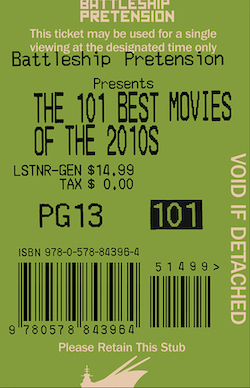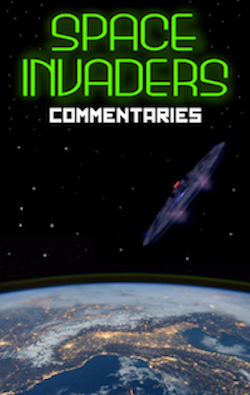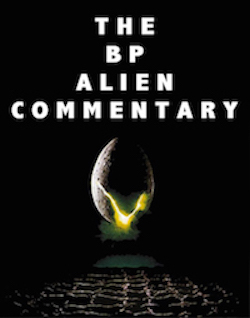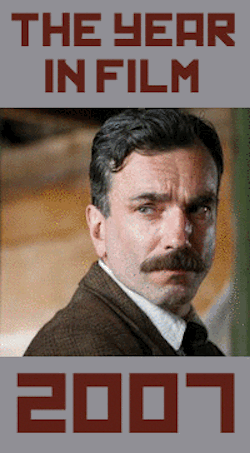The Rise of Television’s Artistic Status, by Darrell Tuffs
Until recent years, cinema had always held a large artistic dominance over television. The cinema has always been home to huge spectacle films that, for the most part, remain firmly on top of the world’s entertainment outlets in terms of scale. But, films have also allowed smaller character studies and technical cinematic masterpieces of storytelling to flourish within its frames. For many years of television, the same could not be said, or at least, not seen worthy of discussion. Television has always largely been viewed as popular culture for mass audiences. And, unlike the cinema, made quickly at very low costs. Because of this, television had never been viewed as a medium that could ever match the artistic achievements of cinema, reluctantly remaining inferior in its artistic status.
However, in years past, this perception has changed dramatically, we may now be living in the first golden age of modern television, particularly that of the USA. Networks such as HBO and AMC are now producing and broadcasting stunningly popular TV series such as Game of Thrones or Breaking Bad, which, it can be argued harbor just as much storytelling and artistic merits as anything made for modern cinema release. How and from where did this golden age rise? And, does it mean that artistically speaking, television is no longer inferior to cinema?
Although cinema throughout its history has somewhat been influenced and involved in popular culture and commercialism, a large section of film has always been able to thrive outside the Hollywood system as an independent vision. World cinema has often been able to move the medium forward cinematically and artistically by means of creative freedom and improving technologies. This is because, unlike television, cinema at its roots was less commercial, less reliant on advertising and more so on artistic vision and grandness to sell tickets and make money. This, in turn, allowed cinema’s cinematic aesthetic to grow and develop from its very beginnings, resulting in what we know as a “cinematic” visual tone in today’s modern viewing culture. This tone was largely accepted into public consciousness because of its ease in allowing audiences to submerse itself visually in storytelling, human nature, and, above all, an artistic social realism.
From its very first broadcasts, television has indeed been sculptured around a model of mass viewing and communication, catering to a vast range of public ideas and demographics. Television started to develop at first, not cinematically, but commercially. And, is currently not only the world’s main source of communication and information, but also its most popular leisure activity. Television can be a powerful media tool, and has quickly revolutionized the way we as a society are fed information. But, does this mean that a cinematic level of artistic achievement could never radiate from its screen?
Indeed, in most parts of the world, television is just that, a powerful media communication tool, which can be used for both good and evil by ruling authorities. Even in our current cultural climate, television has still only managed to thrive as a dramatic and influential art in the UK, USA and a handful of other countries. There are many possible explanations to why this may be, including larger financial investments, a world dominance of the English language, and growing pools of talent and training within the media of television in these few leading countries.
When it comes to larger financial investments now being made in television, no series stands grander than American broadcaster HBO’s Game of Thrones. With average episodes reportedly costing around $6 million to make, Game of Thrones is now the most expensive television series of all time. And, in its production, matches a level of achievement seen in the best of what is now being made for modern cinema release. The show has also secured a huge global fan base, achieving record-breaking weekly ratings for HBO. Weekly ratings on this scale means that Game of Thrones and many other shows like it, can easily justify larger investments being made by broadcasters such as HBO. And, can now use those investments to equal a tone and visual style only visible in cinema until recent years. Of course, financial success on its own does not guarantee artistic superiority. But, used in the right way, these investments can be the greatest of assets for new talent working in television.
So, in turn, this aesthetic and artistic development in television has been made possible, in part, by growing audience ratings. The greater amount of global audience shows such as Game of Thrones can secure, the more they can be presented cinematically, and harbor within them, greater potential for artistic achievement.
A significant knock-on effect of this greater investment for television, is the growing amount of artistic talent the medium can now draw in. Television no longer has the stigma of being cinema’s less talented, unattractive younger brother. Its form is being challenged and redefined by the talent of new developers, writers, and directors. This talent, before recent years, would have been reserved only for the more prestigious and glamorous world of cinema, leaving television to rely on its more traditional formats. Major film directors such as Martin Scorsese, Michael Mann and Gus Van Sant, are now contributing towards, and directing television series such as Boardwalk Empire and Luck, bringing with them innovative and artistic cinematic merits.
Television is also borrowing talent from the cinema in the form of cinematically minded writers and actors, allowing the medium to grow artistically and dramatically. These creative teams are now starting to notice that television was, all along, suited aesthetically and structurally to a greater level of dramatic and technical innovation. Television is not only being made to look and feel like cinema, but is now also being created partly by the same people.
Of course, the ideas discussed so far have largely been based on what we often call “Quality TV”. But, the aesthetic held by most of the world’s television outlet is based on what we call “Ordinary TV”. This is television format at its least innovative, created for consistency and audience clarity. In viewing televised news bulletins or new daytime TV game shows, this strict sense of format is also apparent. “Ordinary TV” has developed non-challenging and viewer-friendly ways of connecting with audiences, seeming recognizable and structurally balanced, not to visually threaten audiences in any way.
At the same time, world cinema is ever changing, and constantly moving through forms and visual stages. However, recent “Quality TV” has allowed itself to move beyond this. The discussed, Game of Thrones, works tonally as small segments of a larger piece for cinema, only, made for television. This new range of television aesthetics has occurred without audience revolt, and has now been socially accepted as the finest the medium has to offer artistically.
While evaluating how much artistry television has gained in its recent new golden age, it is hard to overlook the popular AMC series Breaking Bad. The show is itself, a gold mine of creative and technical decisions, from its brave and sometimes enigmatic visual style, to its puzzled, non-linear narrative; Breaking Bad is a pure example of modern television artistry. The show often presents its characters expressively; feeling more emotionally grounded than television ever has before. Character motives are given just as much creative attention as plot, and story structure just as much as writing. The show is, in every aspect, a highly artistic achievement.
Breaking Bad, and other new groundbreaking television shows like it, are developing complex serial storytelling skills, of which, have been proved well suited to the long-form format that television holds as a major merit.
For decades, we have understood that cinema can hold within itself, as much artistry as a Van Gogh painting, and as much raw human emotion as the sweetest of Beethoven’s symphonies. Why do audiences freeze with horror when the shark from Jaws terrorizes innocent human lives? Why do our hearts sink with sadness when the little tramp’s child is snatched away from him in The Kid? Why do we keep returning to moments like these in cinema? It’s the same reason we still look into the eyes of the Mona Lisa or the sky in The Starry Night. Cinema has developed, not only as a huge, global entertainment source, but also, as a way of connecting deeply with emotionally charged individual moments. These moments subconsciously submerse us into the mindset of other human beings, allowing audiences to understand the true meaning of artistic achievement.
This is achieved, in part, by realism, and cinema’s ability to project a constructed world, which we know is distant from ours, but in turn, creates emotional similarities. Because of its history of development, television has been used since its birth, as a multi-format media. We view real-world news bulletins, sports competitions, and quiz shows, on the same box as constructed and dramatized human stories attempting to mirror realism. It is for this reason that television drama has struggled artistically against the cinema; society often creates strong connections with television and social communication, in turn, hindering the possible artistic merits of constructed television fiction.
Television has expanded artistically recently because of our deeper acceptance of it as more than a source of entertainment or information. Filmmakers and audiences are now challenging and demanding greater experiences from the medium, in the form of storytelling, aesthetic, and production. However, television is not achieving this by distancing itself from cinema. In fact, the two forms are now closer than they ever have been. This is partly because, now, we are viewing more films on television at home, not only scheduled for television, but on streaming services such as Netflix. We no longer need to visit the cinema to see new releases or challenging works of art, most of these can now be found on television or the Internet. Because of this, the cinema experience itself is losing cultural relevance.
Every aspect of television and cinema are becoming closer; of the two, cinema still has a global edge. But, if television culture continues to progress, it will soon overshadow its former self, becoming a new, more exciting place to explore the possibilities of visual art, and dramatic storytelling.





























